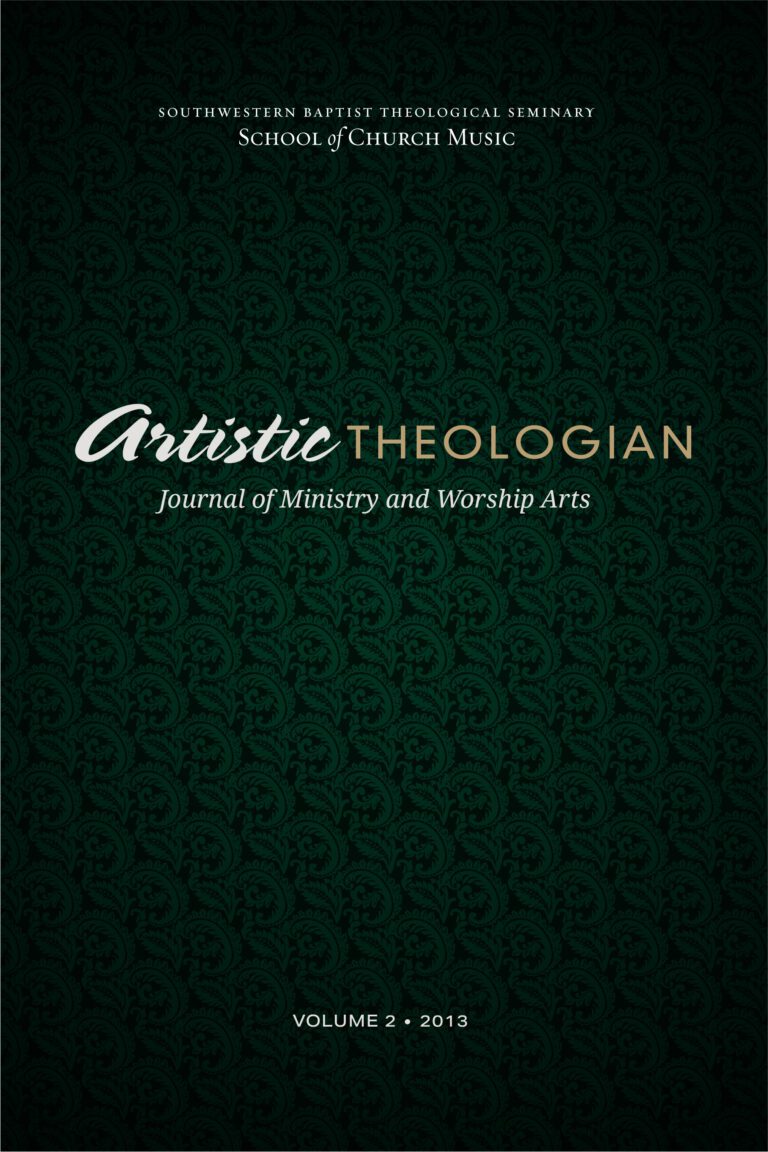
Worship Ministry: An Intersection of Ideas
Artistic Theologian
Volume 2, Summer 2013
Editor-in-Chief: John E. Simons
Liturgy as a Way of Life: Embodying the Arts in Christian Worship, by Bruce Ellis Benson. The Church and Postmodern Culture. Grand Rapids, MI: Baker Academic, 2013. 160 pp. $17.99.
As part of The Church and Postmodern Culture series from Baker Academic, Liturgy as a Way of Life: Embodying the Arts in Christian Worship by Bruce Benson is an attempt to recast the vision of the liturgical life of a congregation away from a particular rite or tradition of worship action into a holistic view of life in community. Benson serves as professor of philosophy at Wheaton College and as the executive director of the Society for Continental Philosophy and Theology. His background and experience in these areas prove valuable in his attempt to analyze liturgical practice in light of postmodern philosophical principles.
The fundamental premise of Benson’s work is that individuals were created with the ability to respond creatively to the call of God. He connects this worship action with humanity’s ability to be artistic: “That call and response can rightly be considered artistic in that we are—in our being—God’s work of art” (25). Humanity embodies the liturgical life as it serves as God’s work of art and subsequently creates in response to God’s action. Because he grounds his argument of liturgy as a lifestyle within aesthetic and theological terms, Benson proceeds to interact with the prevailing philosophical views toward both of these fields. While he accepts some of the claims of postmodern philosophical thought, relativism with regards to the arts is a frequent target of Benson’s logic throughout the work. He painstakingly details the way in which society’s view of the arts developed through the centuries and explains how the romantic notion of the “genius artist” runs counter to the biblical view of art.
Benson builds upon this philosophical foundation by using jazz improvisation as a metaphor for the corporate liturgical action. Freed from the modern notion that art is the domain of the genius, worshipers can begin to create their art together as a community of non-professionals, each adding their particular themes to the artistic fabric of congregational worship and liturgy. He connects this concept with the Trinitarian language of perichoresis, whereby each member improvises with the other in the liturgy of life. The fourth chapter takes a somewhat unusual turn as it describes the story of a Jewish artist’s search for his voice in art and the struggle to balance faith and artistic expression. Benson uses this narrative to demonstrate that art created within the Christian community should reflect reality and therefore need not be beautiful to be an accurate response to the Creator. He concludes with a discussion of liturgy as the true “work of the people” and summarizes his previous statement that all of life is a liturgical action.
Throughout the book the author makes several perceptive insights into culture and the way in which Christians navigate ideas and concepts that are in opposition to the biblical mandates. He seeks to shake twenty-first-century believers from the self-consumed narcissism prevalent throughout society and enable them to live lives that respond to God’s gracious call to join him in his work of redemption. Benson’s best contribution lies in his stinging critique of the quasi-religious nature of the fine arts in secular society. He describes the cultural expectations and practices within the fine arts culture, including architecture and ritual, and demonstrates the way in which they echo religious activities. His deconstruction of art as religious experience opens the door for envisioning the arts as a vehicle for worship and expression of the Christian worldview.
Liturgy as a Way of Life covers much of the same ground as other works in the field of aesthetics and liturgy, but it does make interesting connections between jazz improvisation and the traditional worship metaphor of revelation and response. Worship leaders and church musicians would be served well by thinking through many of the issues and topics Benson raises in his work. The corporate action of worship finds renewal as individual believers view their entire lives as acts of worship. Benson makes the case that the greatest fulfillment of the community of faith comes when each member joins his or her individual melody and rhythm with the contributions of others to offer God a creative improvisation upon the themes of redemption, grace, and forgiveness.
David M. Toledo
First Baptist Church
Keller, TX





